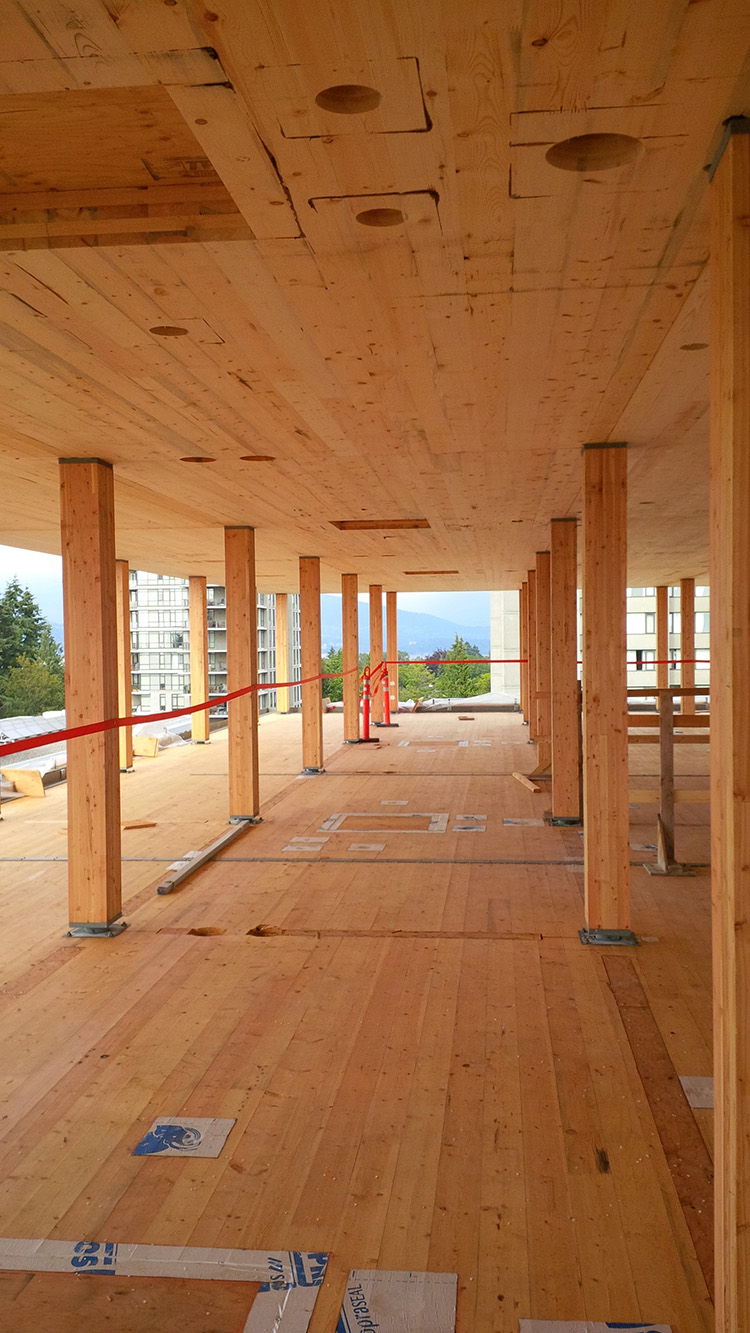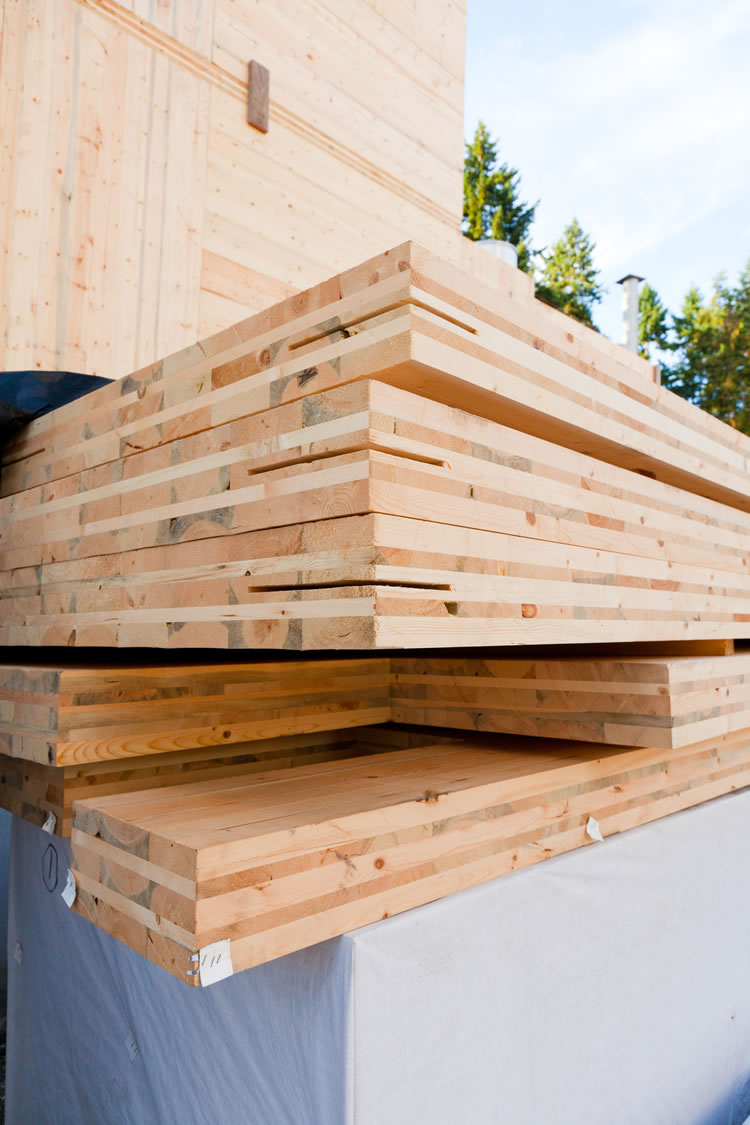Cross Laminated Timber (CLT) a.k.a. Mass Timber
LISTEN...
Cross Laminated Timber or Mass Timber is relatively new to the industry, but some manufacturers are going to the effort of making the panels air-tight in fabrication.
Cross Laminated Timber panels are a bit like giant pieces of plywood, with layers of solid wood planks arranged and glued at 90 degree angles, perpendicular to each other. According to Natural Resources Canada, Cross Laminated Timber (CLT) or Mass Timber has the following properties:
- Excellent structurally rigidity
- Weight compared to strength is excellent, with superior acoustic, fire, seismic and thermal performance
- Potential for shorter on-site construction time compared to traditional wood frame, steel or concrete construction systems.
- The wood used for CLT panels will store carbon and can be reused or recycled.

Important considerations for Cross Laminated / Mass Timber application:
- Complete or partial mass timber buildings must be planned carefully to accomodate connections and installation procedures.
- Mass timber panels too heavy for lifting or installing by hand. Use of heavy equipment is required.
- A plan must be made for service cavities, chases or bulkheads to be added for utilities.
- Use of membranes or sealants may be required when CLT panels are not air-tight. Always follow panel manufacturer specifications.
- Insulation of CLT / mass timber panels is normally biased toward the exterior.
